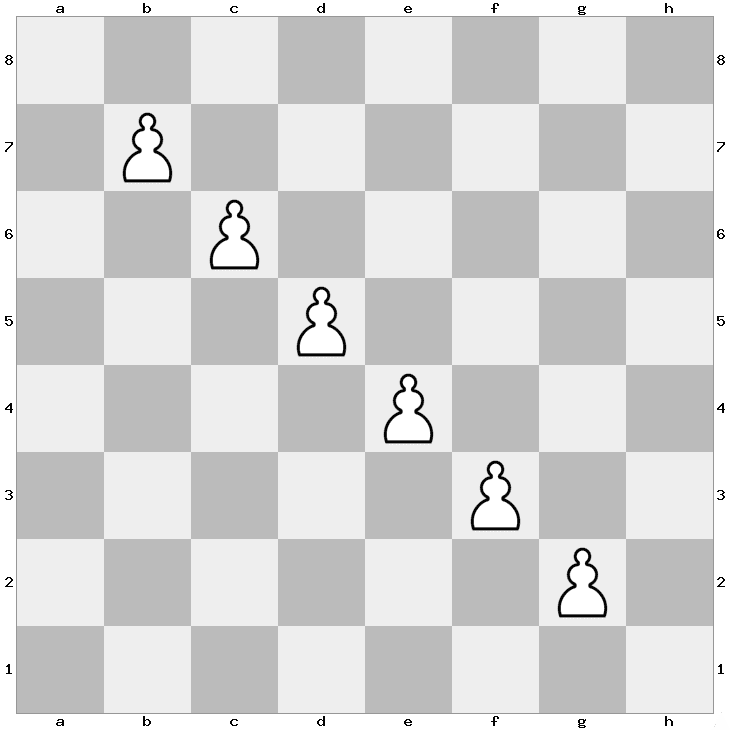Pawns on the Chessboard
Six pawns are placed in the middle squares of the main diagonal of a chess board – b7, c6, d5, e4, f3, g2. You are allowed to take any pawn on the chessboard and replace it with two pawns – one on the square above it and one on the square on its right, in case there are empty squares there. If after several moves there are no more pawns on the main diagonal, show that all the squares above it except for h8 are covered by pawns.

Assign the following weights on the squares of the chessboard:
- 1 on the main diagonal a8 – h1
- 1/2 on the diagonal b8 – h2
- 1/4 on the diagonal c8 – h3
- 1/8 on the diagonal d8 – h4
- 1/16 on the diagonal e8 – h5
- 1/32 on the diagonal f8 – h6
- 1/64 on the diagonal g8 – h7
Every time you make the splitting move, the total sum of the numbers of the squares covered by pawns remains a constant. At the beginning that sum is 6. Since 7/2 + 6/4 + 5/8 + 4/16+ 3/32 + 2/64 = 6, all 27 squares above the main diagonal, except the top-right corner (on which you can not place a pawn in any way), must be covered by pawns at the end.
We do not know where this puzzle originated from. If you have any information, please let us know via email.


